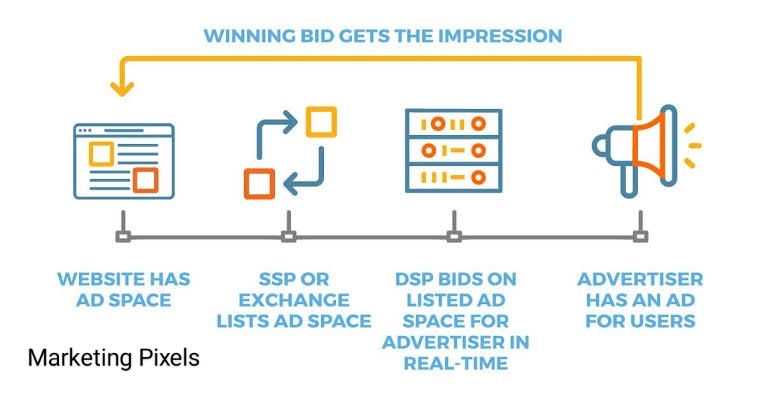1. Advertiser Demand: Advertisers use demand-side platforms (DSPs) to set up their ad campaigns and target specific audiences. They define criteria such as demographics, interests, and behavioral attributes to identify the desired audience for their ads.
2. Ad Inventory Availability: Publishers make their ad inventory available through supply-side platforms (SSPs) or ad exchanges. This includes information about the ad space, the website or app where the ad will be displayed, and other relevant details.
3. User Visit: When a user visits a website or app, the publisher sends a request for an ad impression to an ad exchange or SSP. This request contains information about the user, the website, and available ad inventory.
4. Auction Process: Ad exchanges or SSPs conduct auctions in real time to determine which advertiser will win the opportunity to display their ad to the user. DSPs submit bids based on the value they assign to reaching that specific user with their ad.
5. Ad Serving: The auction is completed within milliseconds, and the winning bidder's ad is served to the user on the publisher's website or app. The entire process happens in real time, allowing for dynamic and personalized ad delivery.
FAQs about Real-Time Bidding:
1. What are the benefits of real-time bidding?
Real-time bidding offers several benefits, including increased efficiency, better targeting, and improved campaign performance. It allows advertisers to reach specific audiences with relevant ads, optimize bids in real time, and only pay for impressions that meet their targeting criteria.
2. How is the bid value determined?
The bid value is determined by the advertiser's budget, their target audience, and the perceived value of reaching that particular user with their ad. Advertisers set maximum bid limits within their DSPs, and the bidding algorithm adjusts the bid value based on available ad inventory and competition.
3. Do advertisers have control over where their ads appear?
Yes, advertisers have control over where their ads appear to some extent. They can use whitelists or blacklists to specify websites or categories where they want their ads to be shown or avoid being displayed. Advertisers can also leverage brand safety tools to ensure their ads are displayed in appropriate environments.
4. How are ad impressions measured and verified?
Ad impressions are measured and verified through third-party ad verification and measurement tools. These tools track impressions, clicks, conversions, viewability, and other metrics to provide transparent and reliable data for advertisers.
5. Can advertisers optimize their bids during the campaign?
Yes, advertisers can optimize their bids during the campaign based on performance data. They can adjust bid values, targeting criteria, and budgets to maximize their return on investment and improve campaign effectiveness.
6. Is real-time bidding suitable for all advertisers?
Real-time bidding is suitable for advertisers of various sizes and budgets. It offers flexibility, scalability, and granular targeting options that can be customized to meet different advertising goals. Both small businesses and large brands can leverage real-time bidding to reach their target audiences effectively.
7. How does real-time bidding contribute to ad personalization?
Real-time bidding allows for dynamic ad personalization by leveraging data about the user in real time. Advertisers can tailor their ads based on factors such as demographics, interests, browsing history, and contextual information, delivering more relevant and engaging ads.
In summary, real-time bidding is a programmatic advertising method that enables advertisers to bid on ad impressions in real time. It offers benefits such as improved targeting, efficiency, and personalization, allowing advertisers to reach their desired audiences effectively.





No comments